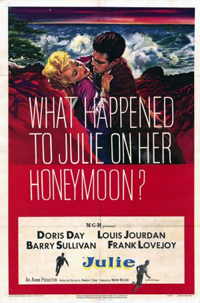
Zero Hour! is a 1957 American drama film directed by Hall Bartlett from a screenplay by Bartlett, Arthur Hailey, and John Champion. It stars Dana Andrews, Linda Darnell, and Sterling Hayden and features Peggy King, Elroy "Crazy Legs" Hirsch, Geoffrey Toone, and Jerry Paris in supporting roles. It was released by Paramount Pictures.
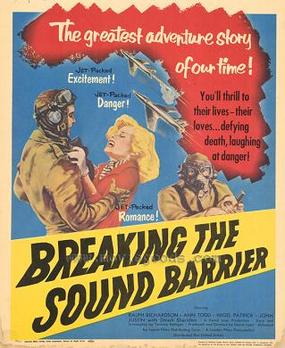
The Sound Barrier is a 1952 British aviation drama film directed by David Lean. It is a fictional story about attempts by aircraft designers and test pilots to break the sound barrier. It was David Lean's third and final film with his wife Ann Todd, but it was his first for Alexander Korda's London Films, following the break-up of Cineguild. The Sound Barrier stars Ralph Richardson, Ann Todd, John Justin and Nigel Patrick. It was known in the United States as Breaking Through the Sound Barrier and Breaking the Sound Barrier.
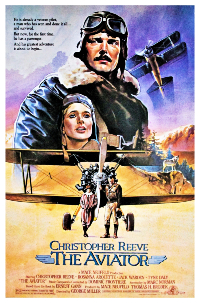
The Aviator is a 1985 American aviation adventure drama film directed by George T. Miller and starring Christopher Reeve and Rosanna Arquette.
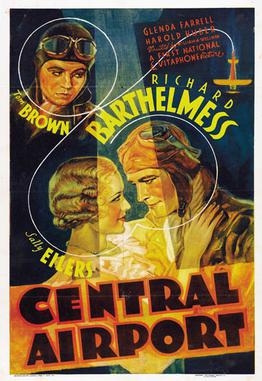
Central Airport is a 1933 American pre-Code aviation drama film directed by William A. Wellman, based on the John C. "Jack" Moffitt story, "Hawk's Mate". The film stars Richard Barthelmess and Sally Eilers. Central Airport was produced and released by Warner Bros., on April 15, 1933. John Wayne had an uncredited part in the film, playing a co-pilot, and this film features his first on-screen death.

Back from Eternity is a 1956 American drama film about a planeload of people stranded in the South American jungle and subsequently menaced by headhunters. The film stars Robert Ryan, Rod Steiger, Anita Ekberg and Gene Barry. The film is a remake of the 1939 film Five Came Back, also directed and produced by John Farrow. Richard Carroll, who is credited with writing the story for Back from Eternity, wrote the original story for Five Came Back.

Ceiling Zero is a 1936 American adventure drama film directed by Howard Hawks and starring James Cagney and Pat O'Brien. The picture stars Cagney as daredevil womanizing pilot "Dizzy" Davis and O'Brien as Jake Lee, his war veteran buddy and the operations manager of an airline company. Based on a stage play of the same name, the film blends drama with some light comedy. The title, as defined at the beginning of the picture, is an insider term referring to those moments when the sky is so thick with fog that navigating an aircraft is nearly impossible.

Gallant Journey is a 1946 American historical film written, produced and directed by William A. Wellman and starring Glenn Ford, Janet Blair and Charles Ruggles. The film is a biopic of the early U.S. aviation pioneer John Joseph Montgomery. Gallant Journey depicts his efforts to build and fly gliders, from his childhood through to his death in 1911. The chief stunt pilot for the film was Paul Mantz. It was produced and distributed by Columbia Pictures. It is also known by the alternative title The Great Highway
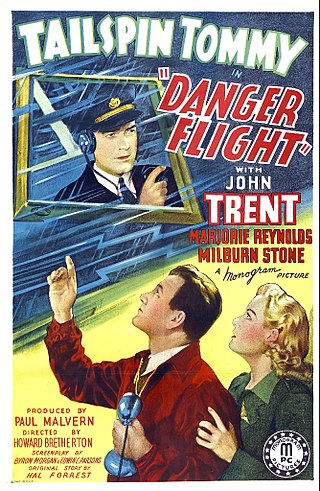
Danger Flight is a 1939 American film directed by Howard Bretherton and starring John Trent as Tailspin Tommy Tompkins, Marjorie Reynolds, Milburn Stone and Jason Robards Sr. The film featured young aviation enthusiasts in a model club.
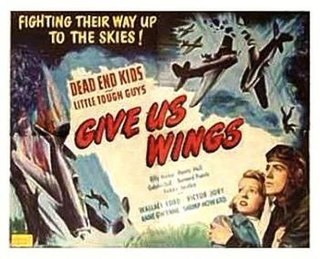
Give Us Wings is a 1940 Universal comedic film starring the Dead End Kids and the Little Tough Guys. Several members of the casts of those series were also featured in "The East Side Kids" films.

The Great Plane Robbery is a 1940 crime-adventure B film directed by Lewis D. Collins. Collins was more often associated with directing serials for Universal and Columbia Pictures. It stars Jack Holt, Stanley Fields and Noel Madison. Though typical of the melodramas that Holt made after transitioning from silent screen epics, western and adventure films were his forte. Reviewer Hal Erickson found it ironic that Holt, who in real life had a fear of flying, starred in so many aviation-oriented films. It was written by Albert DeMond from a story by Harold Greene.

Federal Fugitives is a 1941 American film noir directed by William Beaudine. The film stars Neil Hamilton, Doris Day, Victor Varconi, and Charles C. Wilson.
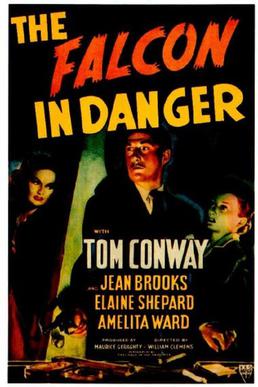
The Falcon in Danger is a 1943 American mystery film directed by William Clemens and starring Tom Conway, Jean Brooks, Amelita Ward and Elaine Shepard. The film was the sixth of thirteen The Falcon detective films produced by RKO, all starring Conway.
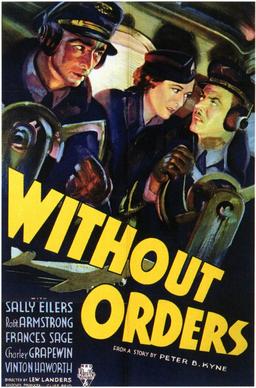
Without Orders is a 1936 American drama film directed by Lew Landers and starring Sally Eilers, Robert Armstrong, Frances Sage, Charley Grapewin and Vinton Haworth. It was produced by RKO Radio Pictures, who released the picture on October 23, 1936. The screenplay was written by Samuel Briskin and Cliff Reid, based on the short story of the same name by Peter B. Kyne, which had appeared in the February 8, 1936 edition of Collier's magazine.

Murder in the Air is a 1940 American drama film with science fiction elements directed by Lewis Seiler and written by Raymond L. Schrock. The film stars Ronald Reagan, John Litel, Lya Lys, James Stephenson, Eddie Foy, Jr., Robert Warwick and Victor Zimmerman. Murder in the Air was released by Warner Bros. on June 1, 1940.

Fugitive in the Sky is a 1936 American aviation drama film directed by Nick Grinde and written by George Bricker. The stars are Jean Muir, Warren Hull, Gordon Oliver, Carlyle Moore Jr., Howard Phillips, Winifred Shaw and Mary Treen. Fugitive in the Sky was released by Warner Bros. on November 28, 1936, a mere six months after the Paramount Pictures feature, 13 Hours by Air, considered by aviation film historian Michael Paris in From the Wright Brothers to Top Gun: Aviation, Nationalism, and Popular Cinema (1995), as a virtual "remake" of the earlier film.
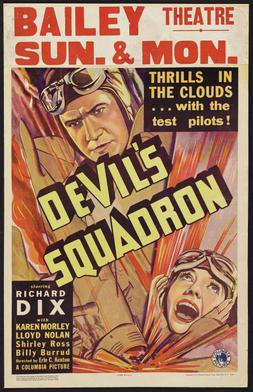
Devil's Squadron is a 1936 American drama film directed by Erle C. Kenton and starring Richard Dix, Karen Morley and Lloyd Nolan. The following written prologue appears after the opening credits: "This picture is dedicated to the test pilots....those men who knowingly face death every time they leave the ground in an untried airplane. We never hear of these men, yet on their courage depends the future of aviation."
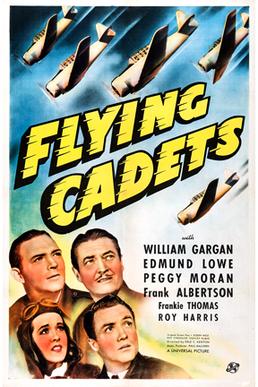
Flying Cadets is a 1941 American adventure film directed by Erle C. Kenton and written by George Waggner, Roy Chanslor and Stanley Rubin. The film stars William Gargan, Edmund Lowe, Peggy Moran, Frank Albertson, Frankie Thomas and Riley Hill. Flying Cadets was released on October 24, 1941, by Universal Pictures.

War Correspondent is a 1932 American drama film directed by Paul Sloane. The film stars Jack Holt, Ralph Graves and Lila Lee. Although set in war-torn China, War Correspondent was entirely shot in California.

Pirates of the Sky is a 1926 American silent adventure melodrama film directed by Charles Andrews. The film stars Charles Hutchison, Wanda Hawley and Crauford Kent. In different sources, Pirates of the Sky distributed by Pathé Exchange has conflicting release dates of February 20, 1926 and March 21, 1927.

Flight attendants appear in films, television and printed works. This is a list of some appearances.
